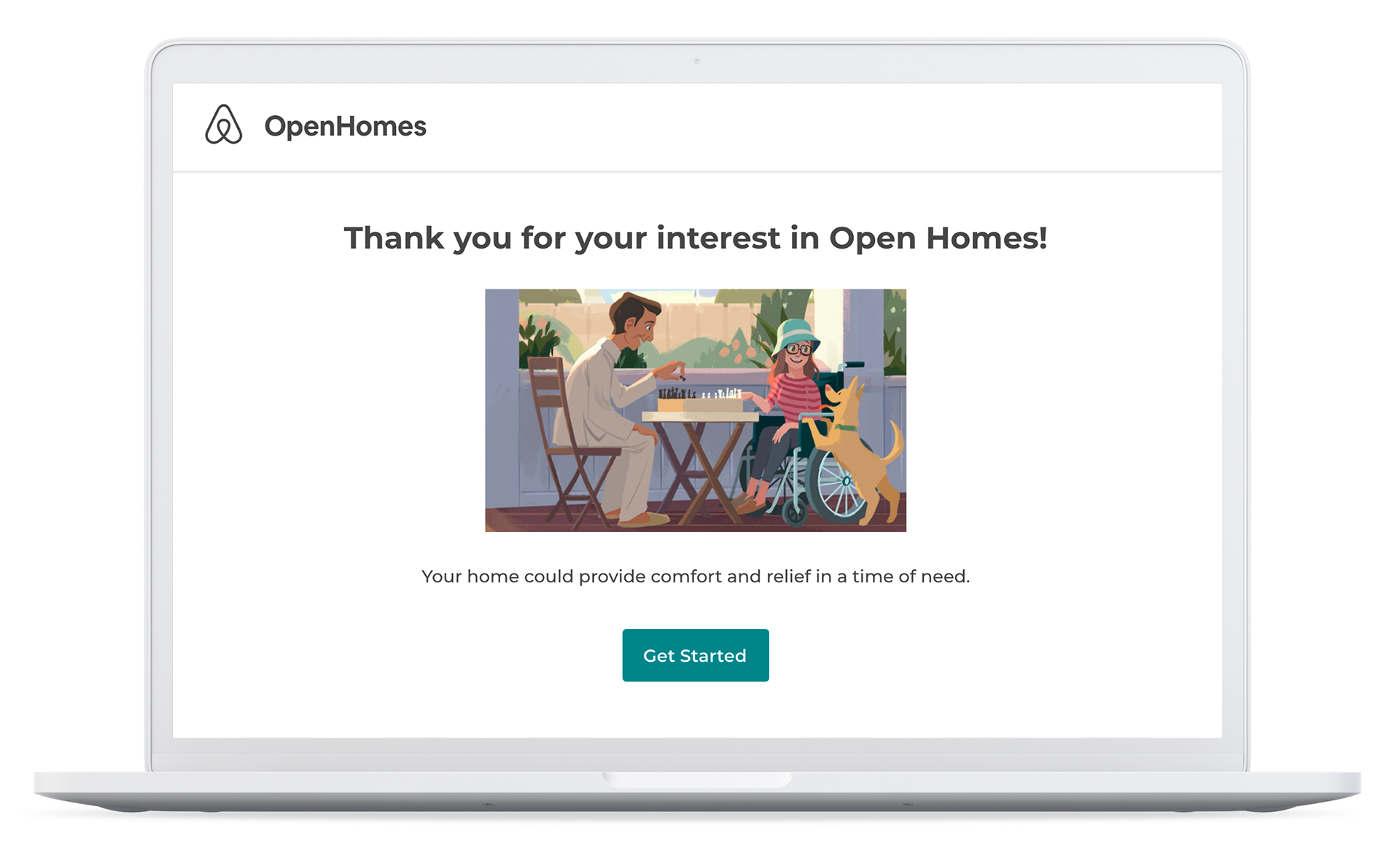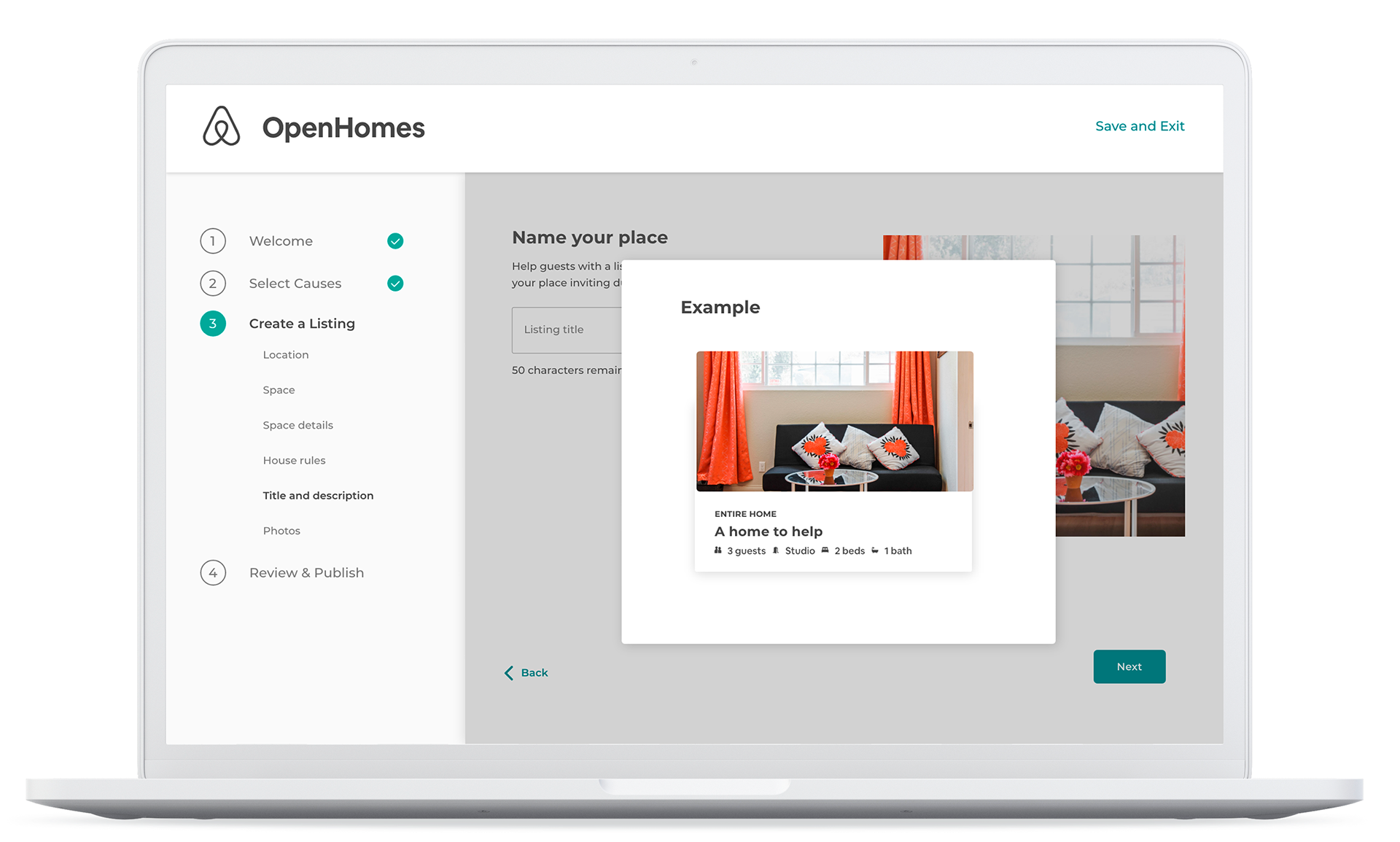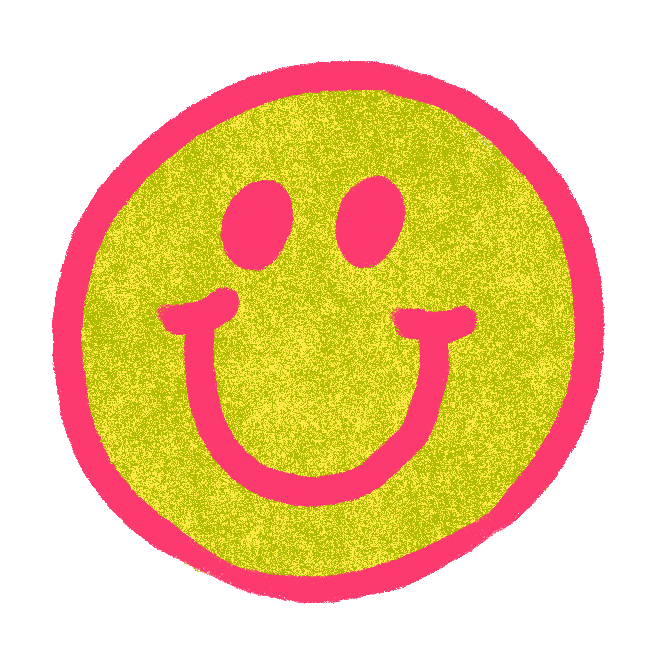

I redesigned Airbnb OpenHomes’ onboarding process to provide a clearer, more human experience to empower potential members of this community to help others in need.
Overview
Last year I got to help plan a conference where Annie Wu spoke about her journey through design and her career at Airbnb creating products and experiences at Open Homes to aid in refugee resettlement. Before then, I already loved Airbnb’s desktop experience: clear, trustworthy, and exploratory. It had opened financial access to traveling in a way I didn’t have before. I am invested in the intersection of design and social impact, so her work really spoke to how design can actually be used to help others in a real, life-changing way. I myself am the daughter of two genocide refugees, so working on a platform that helps with refugee resettlement meant a lot to me.
Airbnb already has an amazing design system (built by a team of crazy-cool designers), so I knew that I couldn’t do it justice by just doing a shallow visual redesign of something that wasn’t broken. I chose to redesign the UX of the onboarding process to stay true to both the feature mission and Airbnb’s branding.
Role:UX Designer and Researcher
Research Strategy
To define opportunities for a robust redesign for Open Homes, I divided my research process into two steps:
1.) Going through the website and onboarding process as an open-minded user to take notes of strengths and weaknesses
2.) Conducting value-based user interviews with Airbnb and non Airbnb users distributed across age groups
Product Research
The informational site for Open Homes struck me as to-the-point, emotionally- engaging, and beautiful. I knew that the designers, whoever they are, put a lot of effort and thought into its messaging. My own family sought out refugee status to escape danger in Cambodia, so I was excited to read through all of the stories and go through the onboarding process.
Impression #1: The commitment to hosting an Open Homes stay is one of great kindness and commitment. The "informational introduction" does not reflect either warmth or newfound clarity.
Impression #2: The remainder of the onboarding process is almost exactly the same as a normal listing, implying that this portal is not customized for the specific needs of hosts interested in refugee resettlement, medical stays, or disaster relief.
User Research
Rigorous user research really inspires me to push the boundaries on what I’m designing, and more importantly why I’m designing. I reached out to users and non-users to conduct interviews and learn about their values on resettlement and helping others, safety/trust, and their experience on the current Airbnb platform.
Cecilia
“I’m a girl in my early 20’s living alone, so I have huge worries about my safety and would want to minimize risk as much as possible. But I really want to help these people and would host if at all possible.”
Cecilia is an avid Airbnb user and finds a lot of meaning in the platform and the experiences she’s had. She is also passionate about human rights and equity. As I interviewed her, she kept going between thinking critically about her safety as a young woman and wanting deeply to help others, especially in cases such as refugee resettlement and disaster relief.
Insight #1: Potential hosts looking to join the Open Homes community have the best intentions and want to help, but need transparency in the process to feel comfortable.
How might Open Homes better assure users, especially those whose identities are vulnerable, that the process is transparent and safe?
Cedrick
“It’s hard to take the responsibility of helping someone when I feel like I don’t have the resources to help them emotionally or support their trauma. This process feels just like a regular listing, and not like I’m helping someone through a really hard time.”
Cedrick is also a devout user of Airbnb. He used it to plan his first overseas independent trip. Cedrick is the son of someone who came to America to escape war and knows the importance of housing in a transition period. However, as he went through the interview he kept returning to not feeling prepared in the onboarding to support someone going through such a tough time.
Insight #2: Hosting someone in a time of struggle is a really wonderful act of kindness, but also something that requires logistic and emotional commitment that can feel overwhelming.
How might an onboarding experience make an Open Homes host feel supported?
Phisey
“Who will actually be supporting me during this process? What does the ‘support team’ even mean? Are they robots?”
Phisey has never used Airbnb before and prefers hotels. She was a refugee who fled Cambodia in order to survive and find a better life. She has lived experiences in transitional housing and finding a community. As I interviewed her, she was also worried about the transparency of the process and who she would actually be able to help.
Insight #3: Users who want to help others but are not familiar with different online consumer services need feelings of guidance and security.
How might Open Homes provide these for this subset of their community to make sure the most good can be done?
Defining Redesign Opportunities
After my research phase, I synthesized all of the data and insights to define the most robust opportunities for redesign. These are the areas that I chose:
1.) Lack of clarity and warmth in the
onboarding process
onboarding process
2.) Confusion how to fill out listing so as to show comfort and safety to future guests
3.) Sense of overwhelming responsibility in supporting guests
Ideation
Below are rough sketches and notes I drew to satisfy my "what am I going to do with all of this information?" scratch. I'm a strong believer in just throwing your pen to paper when stuck, and this is a good example of when I was able to get "unstuck" in the process. From these sketches I pinpointed tangible ways to synthesize my insights into redesigned features of the onboarding process.
1.) Restructuring onboarding: Currently, the flow is: intro → causes → listing → local laws and taxes → finish After the introduction, the onboarding process is almost identical to the normal listing process for a regular Airbnb host. I am implementing a new structure to change the experience: thank you → intro → qualifications for hosting → qualifications for guests → assisted listing → finish
2.) Page reformatting: split window into three "parts" progress/context section for user to see where they're at in their application, form section, additional visual asset section for either warmer messaging or assistance in filling out forms.
3.) Suggestions and examples for listing forms: a small icon placed next to description text boxes so that the user can see a proper example of how to help others in their own writing
Design
Here are my following redesigns after showing prototypes to my design peers and the same people I interviewed. I'm grateful that I got to have their input in my design, and loved that I was able to iterate towards this final product:
1. Warm introduction
The current onboarding process has no indication of appreciation for its user making a big commitment to open up their home to help others. I wanted to make sure that users felt like they made the right decision right from the beginning. I created "thank you" page and changed the previous illustrations, which were a bit too minimal compared to Open Homes' current emotional visual language, to the one that they have on their blog.
2. Visual roadmap of onboarding for clarity of process
I really appreciated a roadmap of general hosting for Open Homes on the different pages on the website, so I wanted to translate that into the onboarding portal to help provide clarity to the user on what will happen next.
3. Creation of progress bar
The current portal has a very inconsistent method of tracking progress: either it doesn't at all (the entire bar is full no matter what) or does it differently on every new page. I created a left-hand progress tracker so that a user would be able to tell what sections they've completed already and what they have left to fill out.
4. "Orientation" addition to creation of listing
Right now, there is no actual introduction to what being an Open Homes host or guest means in the portal. From my research, I found that this lack of information could push people to back out of this process. I pulled information from Airbnb's Help Center to create these pages. This information related to essential topics for potential hosts: qualifications for hosting, qualifications for guests, and support available for hosts (more than just the line "24/7 support team").
For specific visual changes, I added internal links so not all repeated information would be displayed at once and maintained a strong emotional visual language using photographs sourced from their website.
5.) Completion of tasks
I added check marks as another visual indicator that the user got things done. Woo!
6.) Examples of appropriate text
The majority of the current onboarding process doesn't reflect the seriousness of what is actually going to take place in either a guest or a host's life. I wanted to improve the listing flow so that users could look towards examples of writing specific to hosting refugees, medical personnel, or people impacted by a disaster.
Final thoughts
Honestly, this redesign prompt was insanely challenging but really meaningful and satisfying to do. I constantly mulled over the question: am I really qualified to say that these talented professional designers aren't right about this design decision? I wish I had access to Airbnb Open Home's designers, strategists, and researchers. However, because I didn't I tried to align my redesign as closely with their mission as possible while also staying true to the user group that I interviewed. I had previously worked on projects where I was either helping to lead design decisions or building projects up from scratch, so working within design constraints in an already-existing product was a huge learning experience.
This platform means a lot to me and I'm really happy that Airbnb has put some real forethought into making most of it beautifully-designed. I would love to be able to get feedback on my designs and how they align with their product strategy as well as flesh out some other improvements I had in mind (links to actual Open Homes listings, the review + publish feature).
